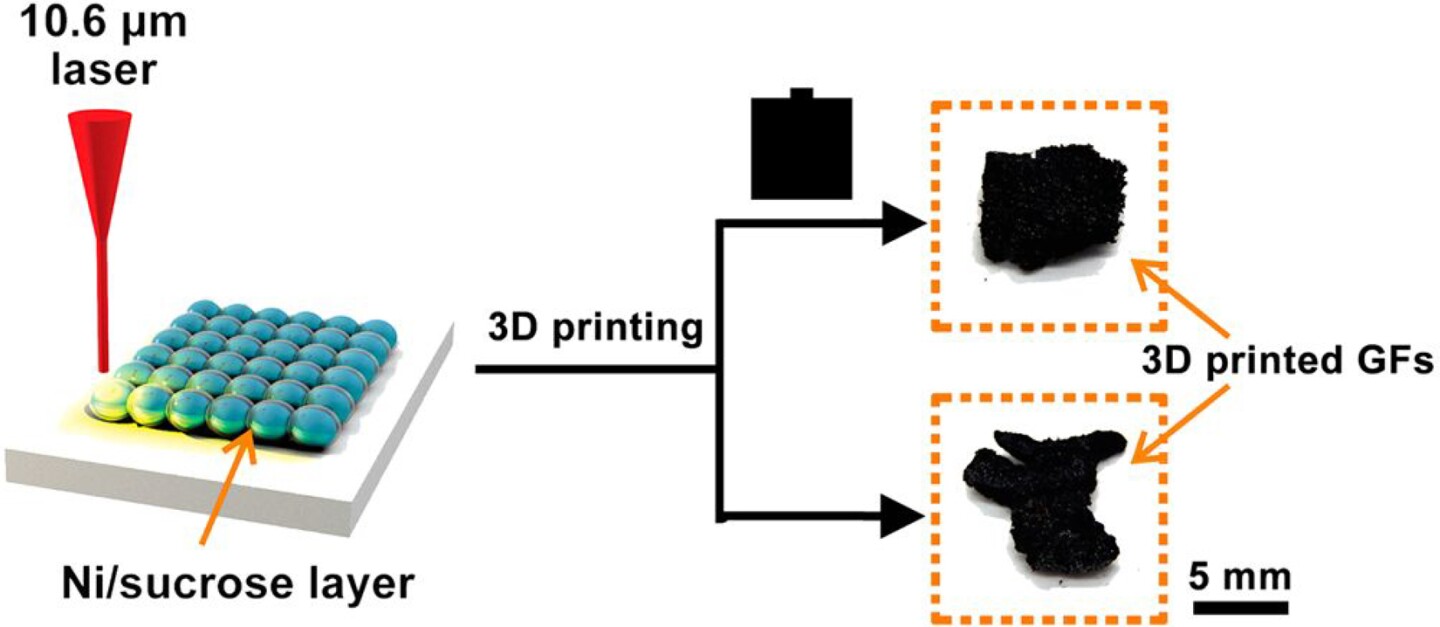The carbon-based wonder material graphene is starting to make the leap from two dimensions to three. Back in February, researchers from Rice University created 3D graphene foam supported by carbon nanotubes, but it was difficult to make. Now, the team has developed a way to 3D print the material.
Graphene is poised to improve electronics, batteries, medicine, water filters, and basically anything that can benefit from being lighter, stronger or a better conductor of heat and electricity. But before it can really be applied to these problems, it needs to be converted from a 2D sheet into a 3D form – and therein lies the problem. Efforts so far have yielded a material that's not as effective as its two dimensional counterpart.
But things are improving. Back in January an MIT team outlined a way to potentially make a spongey-but-strong 3D graphene, and the Rice researchers followed with their "rebar graphene", reinforced with carbon nanotubes that allow the material to support 3,000 times its own weight.
But as effective as the rebar graphene is, making it is still a complicated and costly process involving chemical vapor deposition (CVD), which can only be done using specialized equipment at very high temperatures.
Instead, this new technique uses a 3D laser printer. Rather than squirting liquid plastics or other building materials through a nozzle, the 3D printers fuse layers of powdered metal together using a laser beam. Layer by layer, an object can effectively be drawn in the metal powder.

The powder in this case was a combination of nickel and sugar. When the laser beam strikes the mix, the sugar decomposes into carbon with the help of the nickel catalyst, before cooling into graphene. The end result is a low-density, fingertip-sized block of graphene foam.
"This simple and efficient method does away with the need for both cold-press molds and high-temperature CVD treatment," says Junwei Sha, co-lead author of the study. "We should also be able to use this process to produce specific types of graphene foam like 3-D printed rebar graphene as well as both nitrogen- and sulfur-doped graphene foam by changing the precursor powders."
The team hopes that making graphene easier to produce on a mass scale will help speed up its entry into industrial applications.
The research was published in the journal ACS Nano.
Source: Rice University





